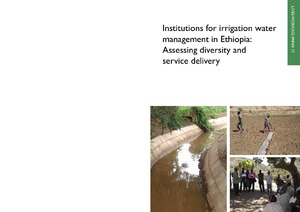Location
Arba Minch University in Ethiopia, is situated at the foot of the Gamo Gofa mountain ranges facing the Abaya Lake, forming part of the East African Rift Valley It was founded in the late 1980s.
With an objective to address water-related issues, the then Arba Minch Water Technology Institute (AWTI) was established in September 1979 EC (1986). AWTI offered short and long-term training; conducting research, and consultancy services in the water sector.
Until 1993, the institute was under the Water Resource Commission and was then transferred to the Ministry of Education. In the wake of the nation’s development plan to produce qualified manpower, the institute was scaled up to the level of university as Arba Minch University in 2004.
The Commissioner of WRC, Mr Alem Alazar, said the purpose of the institute was to train middle level professionals (diploma-level and BSc degree) to narrow the gap between the professional position and the low-level technicians.
Arba Minch Water Technology Institute started its academic function in September 1986 by accepting 181 students in two degree, two advanced diploma and two diploma programs.
The objectives were to provide theoretical and practical education designed to produce manpower, to conduct basic and applied research to ensure the effective utilization of water resources for the development of the country, and to conduct refresher courses for organizations working in the field of water.
Source: Wikipedia (d.d. November 9th 2017)
Members:
Resources
Displaying 1 - 5 of 6On-farm smallholder irrigation performance in Ethiopia: From water use efficiency to equity and sustainability
Analysis of water delivery performance of smallholder irrigation schemes in Ethiopia: Diversity and lessons across schemes, typologies and reaches
Irrigation systems consist of three interdependent components involving: the irrigation scheme, the on-farm management and the organizations. The irrigation scheme refers to the infrastructure for water acquisition and distribution (water delivery). This study focused on water delivery performance of 10 smallholders irrigation schemes in four regions of Ethiopia, representing diverse water sources, distribution systems, command areas (50–6000 ha) and number of beneficiary farmers (233–500 farm households) and across agro-ecologies as represented by elevation ranges (1500–2725 masl).
Institutions for irrigation water management in Ethiopia: Assessing diversity and service delivery
Irrigation systems cannot en sure the equitable distribution of water among users and sustainable operation and maintenance of the schemes without capable irrigation institutions. In Ethiopia, traditional institutions have emerged with the expansion of traditional irrigation schemes and most of them were established and operated on the initiative of the farmers. These often have very limited financial and technical capacities. Current trends show that developing infrastructure is the major concern in irrigation development efforts.
Performance evaluation of irrigation schemes: A case study of Jari and Aloma small-scale irrigation schemes, Tehuledere District, Ethiopia
Irrigation scheme performance assessment is vital to evaluate the impacts of irrigation practices, to identify performance gaps and to improve system performances. However, the performance of Jari and Aloma Small Scale Irrigation (SSI) schemes was not assessed since its operation. Therefore, this study was carried out to evaluate the water delivery, on-farm water management and organizational performances of the two SSI schemes.






